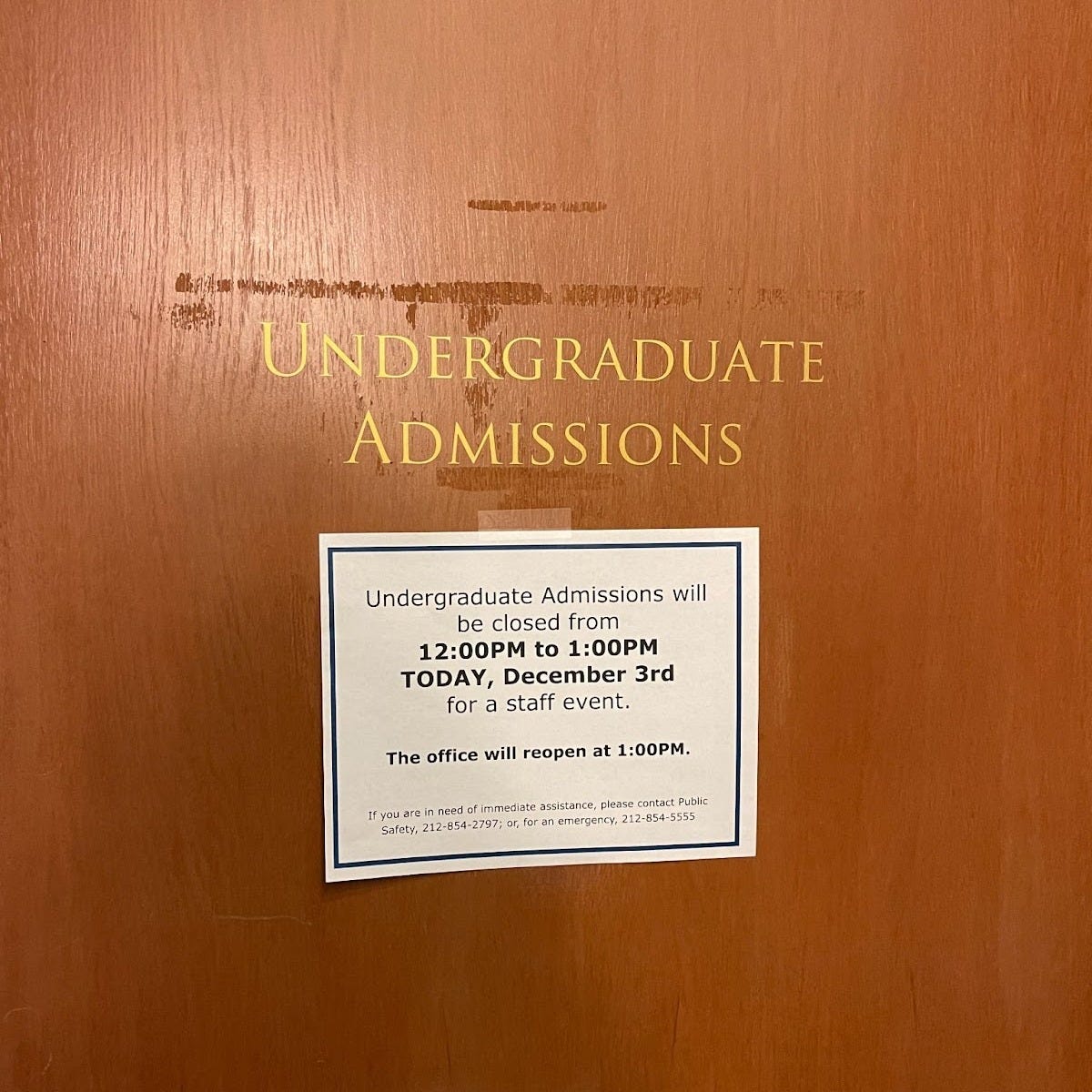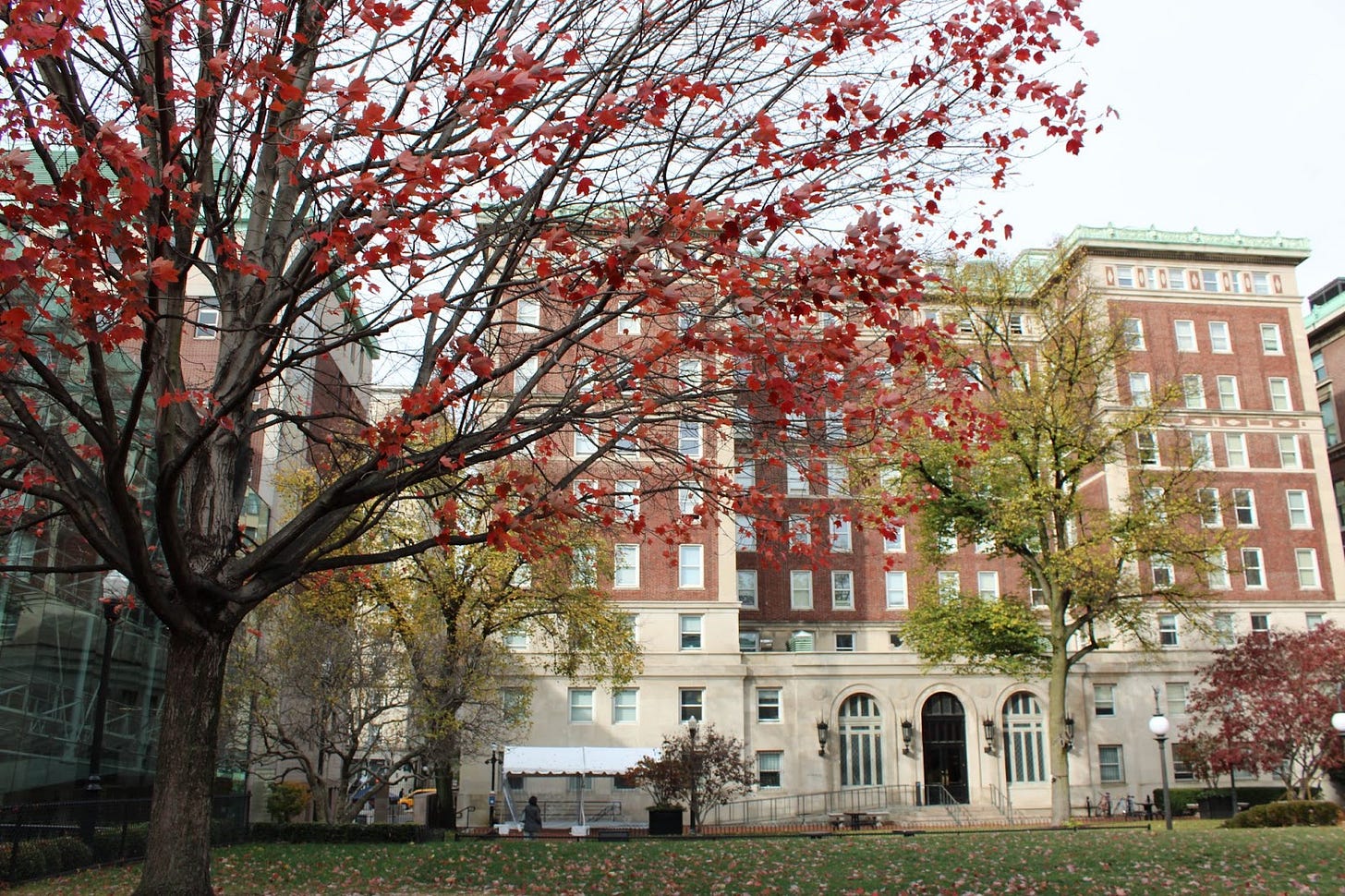Perspectives from the First Post-Affirmative Action Class
Students say the Supreme Court decision impacted their application choices.
The Class of 2028 is the first cohort to apply to college after the Supreme Court ruled that race-based affirmative action was unconstitutional, and as a result, their path to admission was fundamentally redefined.
At Columbia, black enrollment dropped from 20 percent in the Class of 2027 to 12 percent in the Class of 2028, and Hispanic/Latino enrollment dropped from 22 percent to 19 percent. Meanwhile, the Asian American or Pacific Islander enrollment increased from 30 percent to 39 percent. Many other elite schools saw similar changes.
While the impact of these demographic changes is difficult to observe due to first-years’ limited time on campus, the end of affirmative action was quite impactful in their application process. Reesa Venterea, CC ’28, who is Latina, remembers the day the Supreme Court decision was announced. “I genuinely thought that something I had going for me was the fact that I was a person of color and was performing out of the standard for people of color in my hometown,” Venterea, who is from Minnesota, told Sundial. “I was really, really sad.”
In the decision, Supreme Court Chief Justice John Roberts wrote that “nothing in this opinion should be construed as prohibiting universities from considering an applicant’s discussion of how race affected his or her life, be it through discrimination, inspiration, or otherwise.” Therefore, to incorporate race legally, colleges have started giving students a clear option to write about their race.
For example, Babson College added the prompt, “Please share something about your background, lived experiences, or viewpoint(s) that speaks to how you will contribute to and learn from Babson’s collaborative community.” The University of Massachusetts Amherst now lists “race/ethnicity” as an identity category students may choose to write about.
Likewise, Columbia altered the prompt, “How do you or would you learn from and contribute to diverse, collaborative communities?” to “Tell us about an aspect of your own perspective, viewpoint, or lived experience that is important to you, and describe how it has shaped the way you would learn from and contribute to Columbia’s diverse and collaborative community.”
Despite universities providing optional, supplemental ways to incorporate race into their admissions process, many students like Venterea still felt compelled to write about their race in their main Common App essay.
“I think a lot of people did, because we didn’t know how else to share those adverse experiences,” she said, noting that her school’s college counselor also advised her to emphasize race in her application.
Other students, like Sophia Li, CC ’28, strongly considered changing their essays to include race, but ultimately chose not to. “I wanted to stay true to myself without feeling the pressure of pushing a narrative that was overdone over other aspects of myself that play a larger role in my identity,” said Li, who is Asian American.
Similarly, Venterea also wanted to showcase her whole self. “I don’t want to seem separate from my race, but also I am so much more than my race,” she said. However, Venterea ultimately decided to incorporate race into her main essay because she knew she wanted to highlight the struggles that come with being a minority.
Recently, “trauma dumping” has emerged in many college essays as a way for students to stand out by emphasizing the hardships they overcame. Although Venterea disliked the term trauma dumping, she said she “felt compelled to share the adverse experiences in my essay and some short answer responses, just to really drill the point across.”
It’s worth noting that trauma dumping isn’t just limited to race. Ben Miner, CC ’28, who is white, did not feel that affirmative action affected how he approached his application, but he said he did trauma dump to highlight other parts of his identity. “I was incentivized to [trauma dump] as a queer person to better my chances of admission,” he said.
Whether the end of race-based affirmative action influenced how they approached their application or not, the three students I spoke to believe it should be brought back in some capacity.
“Even ‘race-blind’ approaches fail to recognize the unique identities of students of color which are important to them and which they want to be taken into account,” Miner said. While Venterea believes that at some point affirmative action won’t be needed, “Society is not in that place yet. It’s still needed to scale back the damage done historically.”
However, Venterea also believes that instead of race-based affirmative action, policies should shift toward becoming class-based. This would, in theory, not only increase the socioeconomic diversity of the student body but also likely increase racial diversity since race and income are correlated.
Currently, there are many challenges to implementing income-based policies. Admitting more low-income students won’t necessarily increase racial diversity; if it does, it will be to a lesser degree than with race-based affirmative action. There would also need to be a substantial increase in Columbia’s financial aid budget. Data from the 2010s shows that 13 percent of Columbia students come from families in the top 1 percent, and nearly half come from families in the top 10 percent. If the goal is to increase racial diversity, class-based affirmative action is simply less efficient.
These challenges mean that it seems unlikely that universities will implement widespread class-based affirmative action anytime soon. It’s much easier for them to simply add a DEI-targeted essay question and declare that they are doing the best they can, given the Supreme Court’s constraints. But if the goal is to maintain previous years’ racial composition, the Class of 2028’s racial breakdown shows that this has had little efficacy.
Ms. Rajan is a first-year at Columbia College majoring in political science and sustainable development. She is a staff writer for Sundial.




